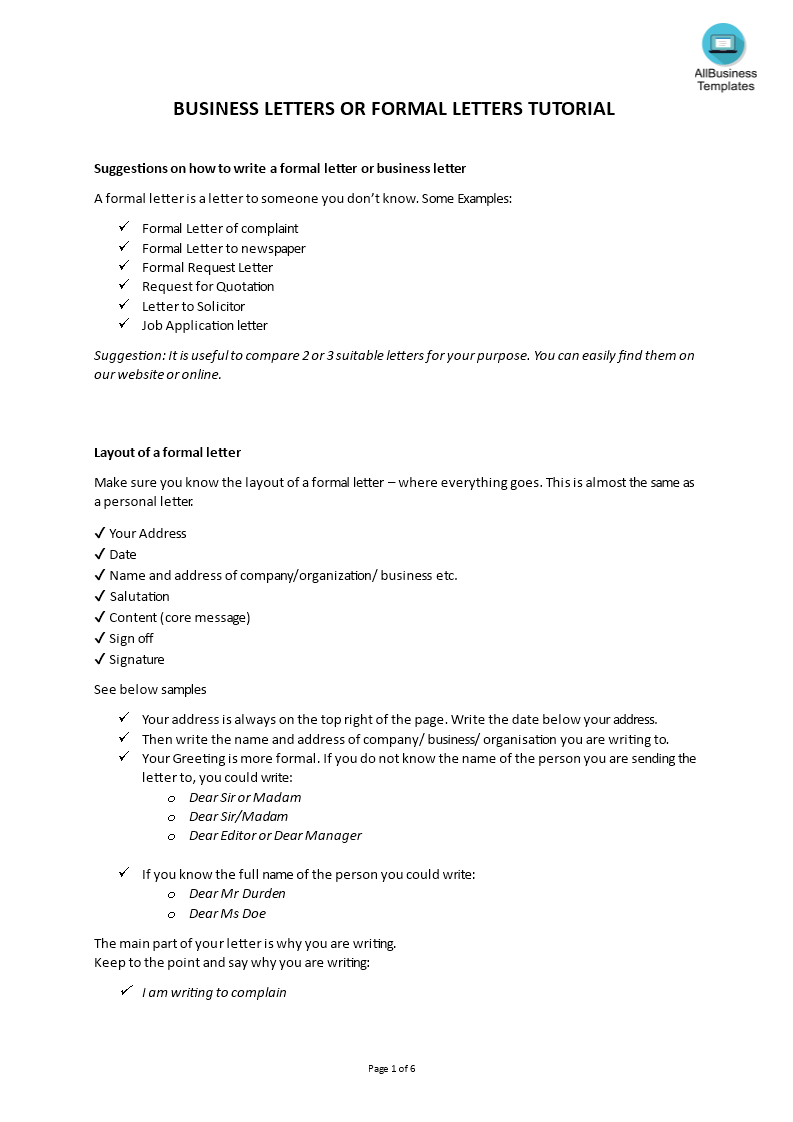Business Letter Formal Format
Save, fill-In The Blanks, Print, Done!

Download Business Letter Formal Format
Microsoft Word (.docx)Or select the format you want and we convert it for you for free:
- This Document Has Been Certified by a Professional
- 100% customizable
- This is a digital download (75.24 kB)
- Language: English
- We recommend downloading this file onto your computer.
How to write a formal business letter? In what format should a formal letter be written? Our sample template can be used as a guide in writing your own business letter. It includes all the necessary elements, such as the sender's address, the recipient's address, the date, and the subject. It also includes the body of the letter and a signature. We provide perfect guidance on how to draft a business letter that fits your needs!
A formal business letter is a written communication that follows a standardized format and is used in professional or business settings for various purposes, such as conveying information, making requests, providing formal responses, or addressing issues. Formal business letters are typically structured, and professional, and adhere to specific conventions of style, formatting, and tone. They are an important means of communication in the corporate world and are often used for official correspondence with clients, customers, colleagues, superiors, and external organizations.
Key elements and characteristics of a formal business letter include:
- Sender's Information: At the top of the letter, include the sender's name, title, company name, address, phone number, and email address. This information should be aligned to the right.
- Date: The date when the letter is written is typically placed below the sender's information and aligned to the left.
- Recipient's Information: Below the date, include the recipient's name, title, company name, address, and other contact information. This information should be aligned to the left.
- Salutation: Address the recipient with a formal salutation, such as "Dear Mr. Smith" or "To Whom It May Concern," followed by a colon.
- Introduction: The first paragraph of the letter should introduce the purpose of the letter and establish a context for the communication.
- Body of the Letter: The main content of the letter is organized in the body paragraphs. This is where the specific message, request, or information is conveyed. Keep the language clear, concise, and respectful. Use formal language and avoid contractions.
- Paragraphs: Use separate paragraphs for different points or ideas, and leave a space between paragraphs for clarity and readability.
- Closing: The closing of the letter is typically courteous and formal. Common closings include "Sincerely," "Yours faithfully," or "Yours truly." Place a comma after the closing and leave space for the signature.
- Signature: Below the closing, leave space for the sender to sign the letter by hand in ink if it's a printed letter. If it's an electronic letter, a scanned or electronic signature may be used.
- Enclosures and Attachments: If there are any additional documents or materials included with the letter, they should be listed at the bottom of the page.
- CC (Carbon Copy): If you are sending copies of the letter to other parties, you can include a "CC" section at the bottom to list the names of those who will receive a copy.
- Reference Line: Sometimes, a formal business letter includes a reference line to indicate the purpose of the letter or to refer to a specific document or matter.
- Subject Line: A subject line can be added to briefly summarize the content or purpose of the letter.
- Letterhead: Many organizations use official letterhead, which includes the company's name, logo, and contact information at the top of the page.
Formal business letters are a professional means of communication and should be written with care and attention to detail. They are used for a wide range of purposes, including job applications, client correspondence, complaints, business proposals, and much more. The tone and style of a formal business letter may vary depending on the specific purpose and the relationship between the sender and recipient.
Download this Business Letter Guidance Formal Format template now, good luck!
DISCLAIMER
Nothing on this site shall be considered legal advice and no attorney-client relationship is established.
Leave a Reply. If you have any questions or remarks, feel free to post them below.
Related templates
Latest templates
Latest topics
- Excel Templates
Where do I find templates for Excel? How do I create a template in Excel? Check these editable and printable Excel Templates and download them directly! - GDPR Compliance Templates
What do you need to become GDPR compliant? Are you looking for useful GDPR document templates to make you compliant? All these compliance documents will be available to download instantly... - Google Docs Templates
How to create documents in Google Docs? We provide Google Docs compatible template and these are the reasons why it's useful to work with Google Docs... - IT Security Standards Kit
What are IT Security Standards? Check out our collection of this newly updated IT Security Kit Standard templates, including policies, controls, processes, checklists, procedures and other documents. - Letter Format
How to format a letter? Here is a brief overview of common letter formats and templates in USA and UK and get inspirited immediately!
cheese

